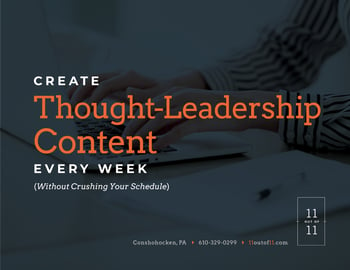In part one of our series, Improve Your Sales Leads in 2021 by Building Out Your Marketing Funnel, we discussed the definition of a marketing funnel and the benefits of building one for your business.
Whether you prefer a funnel visual or not, research shows that 90% of B2B business leaders see customer experience as a strategic priority. People want to interact with companies on their terms, in the way they choose. Companies need to meet them on these terms. This means you and your business should prioritize the creation of effective content for your marketing strategy that will appeal to prospects in a way that they prefer.
As a person moves through the buyer’s journey, your goals for converting them into customers should focus on small successes throughout, using marketing strategies that will increase conversions at each stage, such as:
- Attracting an audience that is unfamiliar with your business.
- Engaging the audience that is familiar with your business.
- Educating people who are committed to making a purchase.
- Converting people who are ready to buy.
- Re-engaging people who have already made a purchase and are fans of your business.
The following tips will help move people through your funnel to increase your conversion rates and improve your results.
1. Choose a model for your marketing funnel.
Since the 1900s when marketing funnels were born, no single model for defining a person’s relationship with a business is universally accepted by all companies. So, you have a choice:
- AIDA – Created by Elias St. Elmo Lewis in 1898, the AIDA model highlights the stages of every purchase: awareness, interest, desire and action.
- TOFU-MOFU-BOFU – A simple strategy that references the top of funnel (TOFU), middle of funnel (MOFU) and bottom of funnel (BOFU) as distinct elements.
- Basic – Most marketing funnels start with an awareness stage and progress through interest, consideration, intent, evaluation and purchase. Some businesses include two more post-purchase stages, loyalty and advocacy, because they believe it can improve their marketing success.
- B2B or B2C - B2B consumers typically navigate the purchasing process as a group and interact with a sales representative during the latter stages of conversion. B2C consumers typically navigate the purchasing process alone or with a small group of trusted friends and family and may never directly interact with a company representative at all.
- Nonlinear – This model takes into account a nonlinear buying process where leads come into the funnel at different stages. People are increasingly researching products and services on their own before ever connecting with a business. Some that choose a nonlinear model reference McKinsey’s consumer decision journey, which employs a circular model to show how the buying process fuels itself and to highlight pivots or touch points.
- The Customer Experience – Some marketers flip the funnel to focus on the process of turning customers into advocates, then refuels the top of the marketing funnel by driving awareness and lead generation. The stages start at repeat then progress to loyalty, referral and advocacy.
2. Increase conversions in the awareness stage with blogging.
Write articles about topics related to your product or industry, even loosely related topics that can lead back to your core product or service. Publishing blog articles and vlogs on your website will improve your chances of being found by search engines when prospective customers are searching for solutions to their problems.
3. Social proof builds trust and helps increase conversions.
It’s called social proof – when people rely on their social networks to find advice, referrals and reviews on your business, productor service. They also expect a business to be available for questions on Facebook and Twitter. They look for tutorials and how-tos on Pinterest and YouTube. They want a behind-the-scenes glimpse of your business on Instagram. Use social networking and publishing to increase trust.
4. Use ad campaigns to drive traffic.
Pay-Per-Click (PPC) or social media ad campaigns convert prospects best when you drive traffic to landing pages where you capture their email addresses and other contact information.
5. Traditional public relations still attracts customers.
Print publications, television commercials, live events, direct mail and advertising are still effective in increasing conversions, especially when combined with text and email marketing.
6. Landing pages see higher conversion rates than a website homepage.
Because a specific landing page has content that addresses one problem with a single call to action, it’s more relevant for solving a visitor’s problem than a general homepage, in exchange for their email address.
7. Calls to action make it clear to your customer what they should do when visiting your web pages.
Decide the action you want your customer to take and add a clear call to action multiple times on the page.
8. Forms help increase conversions during the consideration stage.
Contact forms give a visitor the chance to opt in to your content in exchange for their email address. A simple call to action to complete a form is quick and easy for visitors to comply with and for webmasters to create.
9. Email campaigns increase conversions during the preference stage.
You can begin to educate prospects about your business and build trust using a simple email campaign.
10. Automated email and drip marketing helps educate prospects about your product or service.
Sending a set of personalized email messages to customers or prospects over time can move them through marketing funnel stages that lead directly to a purchase.
11. Customer Relationship Management (CRM) software helps identify where prospects are in your marketing funnel.
Pre-qualify prospects by helping them understand if your product is a good fit for them. Use your CRM to identify which email campaigns they should receive.
12. eCommerce promotions help when it's time to make the ask.
Email subscribers about your newest products, specials and offers like free shipping. Make it simple for customers to find your product or service when shopping and optimize your checkout page by using live chat and other sources of instant help. Consider cross-promotions to help expand your reach and connect you to potential customers on other marketing channels.
13. Targeted content can move along transactions.
For people who abandoned their shopping cart, automatic emails can give them a discount on what’s left in their cart, offer them free shipping or other incentives to help make the sale.
14. Monitoring for related keywords can help identify customers who are ready to make a purchase.
When looking for related keywords, marketers can often engage with prospects who are asking questions about your product or service versus a competitor’s offering. These conversations can quickly lead to a sale.
15. Referrals make it easier to sell to an existing customer.
Ask your customers if they know anyone else who would benefit from your product and offer a discount on their next purchase if they refer a prospect who becomes a customer.
16. Reselling the same product that existing sellers already purchased increases loyalty.
A gentle nudge to re-purchase a product could be all they need to make another sale.
17. Make upsells and cross-sells feel like insider perks to existing customers.
Getting the chance for an add-on, an entire package of goods or an item upgrade increases conversations at the loyalty stage.
18. Customer reminders show you're always thinking of them.
Remind your customers of important dates and events related to your product or service.
19. Don't forget to simply say thank you to your customers.
Emailing a customer on the anniversary of their purchase or birthday to say thank you can go a long way toward building loyalty. Offering a coupon or freebie along with a thank you can go even further.
20. Track marketing funnel metrics every chance you get.
You need to know how well your funnel is functioning. You’re generating informative data with every piece of content you create for every stage of your funnel.
It’s best to choose two to five key performance indicators (KPIs) to focus your attention on. Choose from KPIs like marketing funnel conversion rate, entry sources, time in stage, exit from stage, content engagement rate, opportunity arrival rate, close rate and others.
Generate More Sales Leads in 2021
If you’re wondering how to create more inbound sales qualified leads, stay tuned for the final part of our series, Create More Inbound Sales-Qualified Opportunities. We’ll discuss actionable tips you can include in your plan for 2021, the leads that have the highest chance of conversion.
11outof11 for Marketing Funnel Creation
When you’re ready to build and execute your marketing funnel, connect with 11outof11. Request a complimentary call with an 11outof11 expert. Contact us to learn more.







.png)






